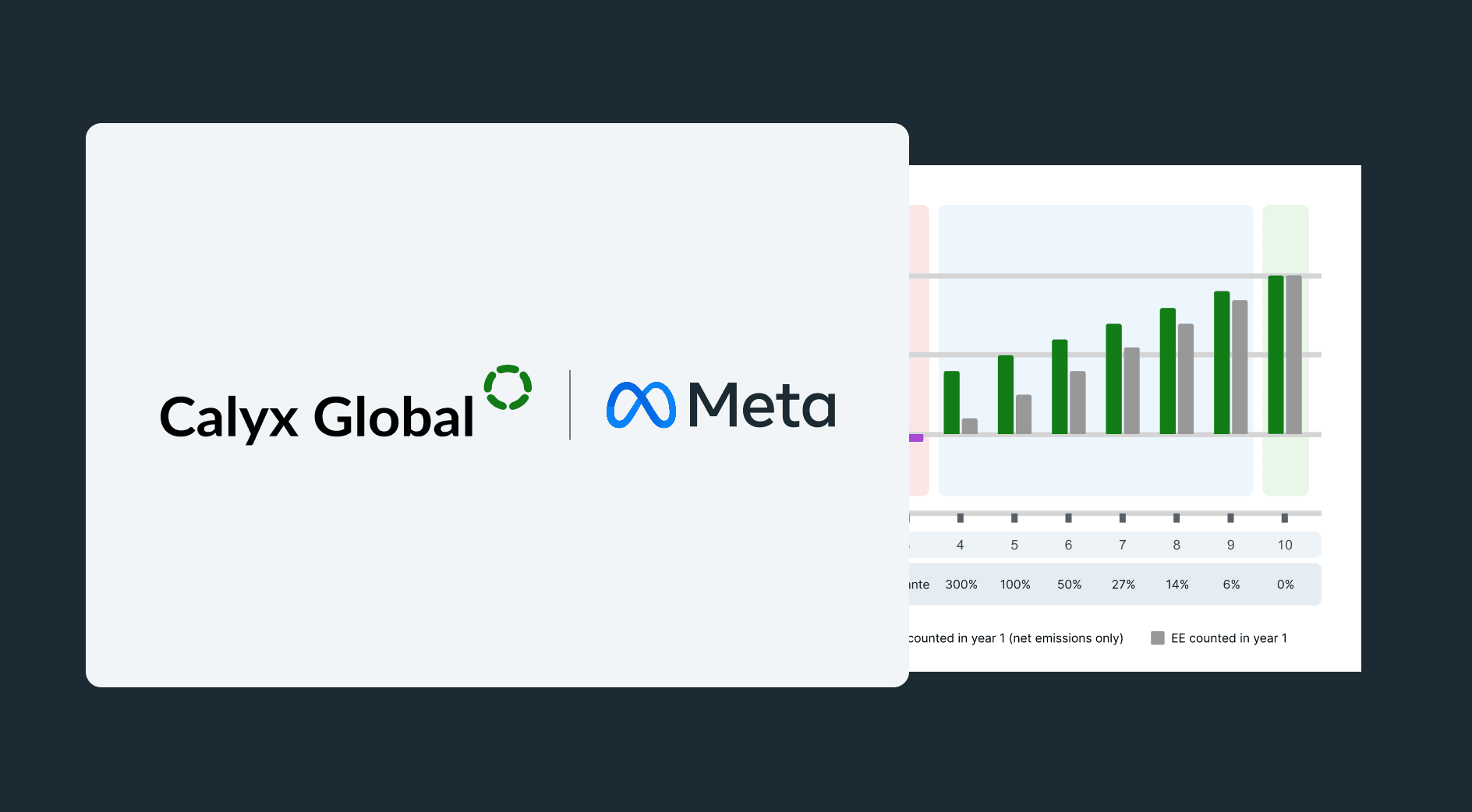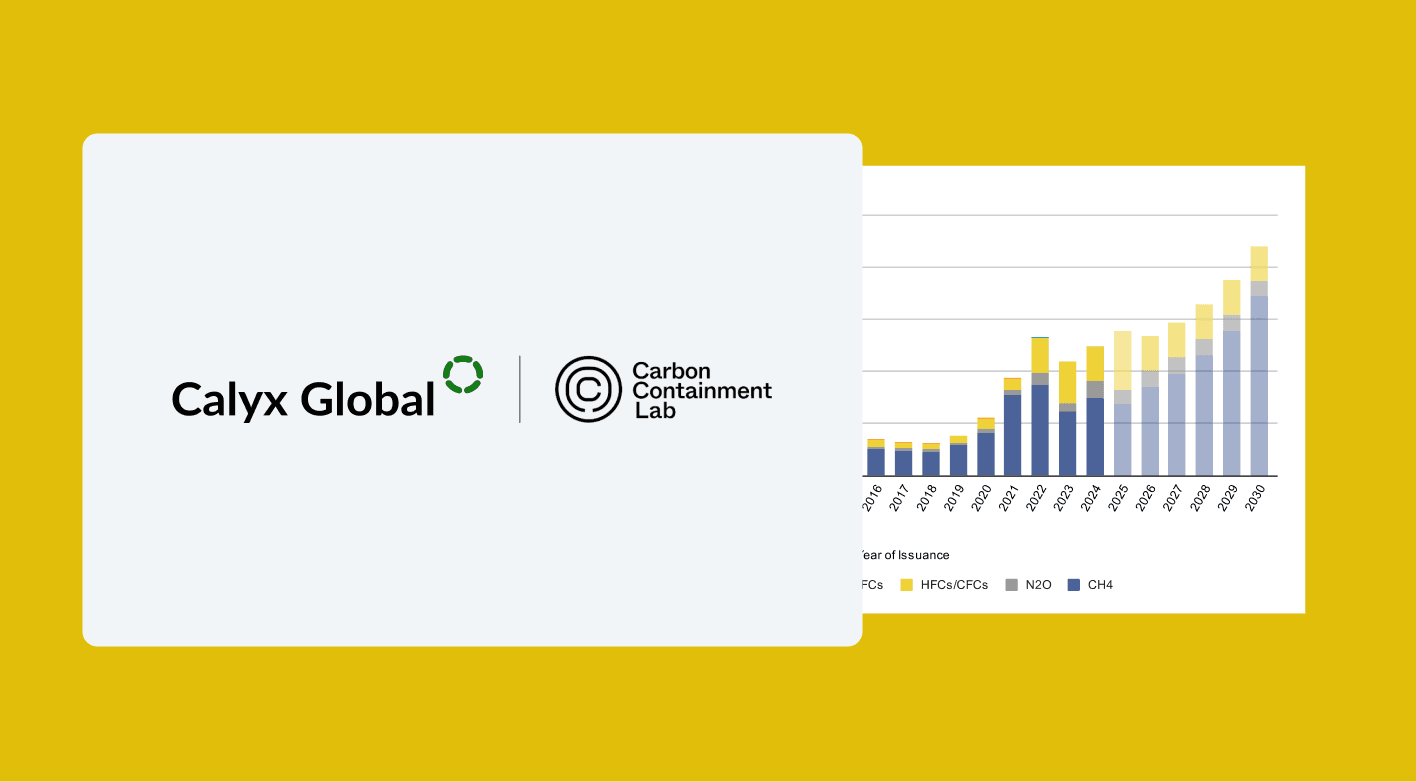
3 hot topics from New York Climate Week 2025
October 8, 2025 - Commentary
New York Climate Week once again brought together climate leaders, innovators and practitioners to accelerate collective action. As we reflect on the week's discussions and events, three critical themes emerged that we believe will shape the future of climate action and carbon markets.
1. Superpollutants: The ugly ducklings taking center stage
The conversation around superpollutants — short-lived climate forcers like methane, nitrous oxide and fluorinated gases — reached new heights during Climate Week. These "ugly duckling" carbon credits may not have the same appeal as nature-based solutions or cutting-edge carbon removal technologies, but their role in keeping us from crossing climate tipping points is critical. Superpollutants alone are responsible for approximately half of current global warming.
Calyx Global was proud to co-host an event with Beyond Alliance that brought together carbon market buyers to explore how superpollutants can be tackled through policy, as well as how they can play a pivotal role in climate strategies. Furthermore, Calyx Global Co-founder Donna Lee shared analysis from over 1,000 ratings by Calyx Global paired with price data from ClearBlue Markets, saying, “Superpollutant carbon credits are among the highest quality in the market and typically at lower price points.”
The momentum extended well beyond our event. Another superpollutant event held by Mitti Labs demonstrated the growing recognition that addressing superpollutants is critical to avoiding climate damage, making them a strong contender for any carbon credit portfolio.
For those looking to dive deeper into the science and opportunity, “Superpollutants: Tackling a major climate threat” provides comprehensive analysis of superpollutants' outsized near-term climate impact.
2. It’s the verified (not voluntary) carbon market
A number of participants spoke about how voluntary credits are increasingly being used in government-mandated markets, blurring the lines between voluntary and compliance markets. Many governments see the benefit of using existing structures rather than reinventing the wheel. This movement highlights the importance of the VCM – as a precursor to regulatory, compliance-based systems.
A constant refrain was: The VCM is the “Verified” Carbon Market, not (only) the Voluntary Carbon Market. This was best illustrated during the launch of the VCM+ (Verified Carbon Market) Coalition, where speakers forbade participants from using the “V” (voluntary) word when speaking about the VCM. The Coalition seeks to deliver 5 billion cumulative tonnes of CO2 reduced or removed between 2026 and 2035.
3. Let’s put an end to climate solution tribalism
One of the most refreshing shifts we observed this year was a move away from solution tribalism. Rather than championing a single approach — whether removals, avoidance or a specific technology — conversations increasingly centered on how different solutions work together.
Portfolio approaches emerged as a recurring theme across multiple events. Sophisticated buyers are recognizing that effective climate action requires balancing removals and avoidance to address both historical emissions and ongoing sources. This approach addresses the timing of warming impact by considering both short-lived climate forcers and long-term carbon dioxide, and managing for certainty while maximizing environmental and community benefits.
The carbon market has matured beyond binary debates. The question is no longer "which solution is best?" but rather "how do we deploy the right mix of solutions to meet our climate goals?"
Moving forward
New York Climate Week 2025 underscored that the path to meaningful climate impact is not about choosing sides — it is about building bridges. Whether addressing overlooked superpollutants, embracing portfolio approaches or learning from market leaders, the message was clear: collaboration and action trump perfection and debate.
As we return from New York energized and informed, Calyx Global remains committed to helping buyers, investors, sellers and project developers navigate this evolving landscape with clarity and confidence. The carbon market is complex, but it does not have to be overwhelming.
Want to learn more about the potential of superpollutants? Read the report from Carbon Containment Lab and Calyx Global.
Keep up with carbon market trends
Get the monthly newsletter and stay in the loop.
Trusted By





